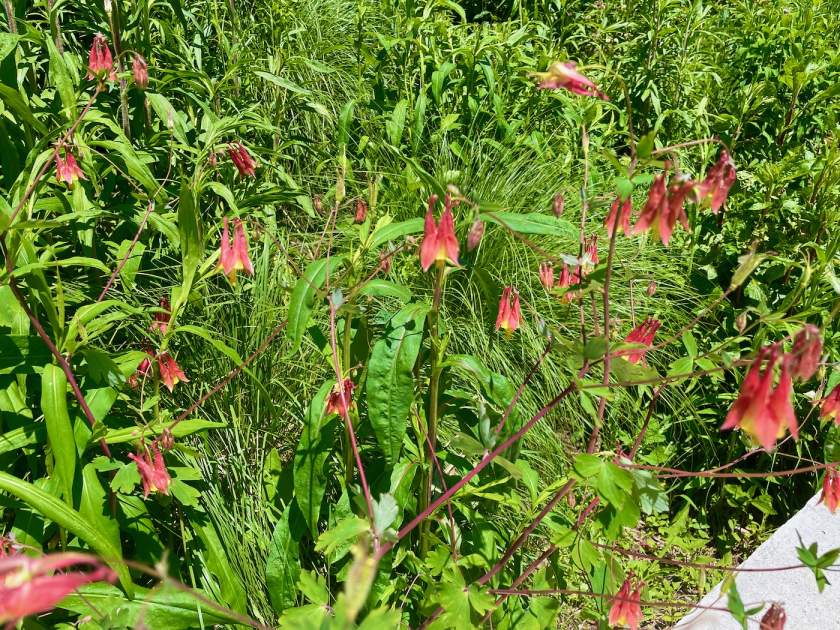Aquilegia canadensis: The Delightful Eastern Red Columbine
Aquilegia canadensis, commonly known as Columbine or Eastern Red Columbine, is a herbaceous perennial that originates from Eastern North America. This delightful wildflower is a member of the Ranunculaceae family and boasts unique bell-like flowers in various shades of red and yellow. The species name “canadensis” signifies its association with Canada and northeastern North America. With its graceful appearance and attractive foliage, Aquilegia canadensis is a beloved addition to gardens and natural landscapes alike.
Characteristics
Aquilegia canadensis showcases elegant, drooping flowers that measure 1-2 inches in size. The blooms feature red sepals, yellow-limbed petals, five distinctive red spurs, and a mass of bushy yellow stamens. These charming flowers are a treat for the eyes and also attract hummingbirds with their abundant nectar. The foliage of Aquilegia canadensis is delicate and biternate, resembling the appearance of meadow rue (Thalictrum). The compound leaves, divided into round-lobed threes, remain attractive throughout the summer when the soil is kept adequately moist.
Cultivation of Aquilegia canadensis:
Aquilegia canadensis is a relatively easy plant to cultivate, making it a popular choice for both experienced gardeners and beginners. Here are some key tips for successfully growing and caring for Aquilegia canadensis:
Sunlight: Aquilegia canadensis thrives in a range of light conditions, from full sun to part shade. It prefers moderate shade in regions with intense sunlight and requires some protection during the hottest hours of the day. Adequate light ensures optimal growth and vibrant flower production.
Watering: This species prefers moist, well-drained soil. Regular watering, especially during the first year after planting, is crucial for the establishment and healthy growth of Aquilegia canadensis. However, it is important to avoid overwatering, as excessive moisture can lead to root rot. Maintaining a consistent level of soil moisture will promote vigorous growth and extended blooming periods.
Soil: Aquilegia canadensis exhibits a wide range of soil tolerance, as long as the soil offers good drainage. It thrives in rich, moist soils, making it ideal for woodland gardens and areas with loamy or sandy soil compositions. Adding organic matter to the soil improves its fertility and moisture retention.
Pest and Disease:
While Aquilegia canadensis is generally pest and disease resistant, a few issues may arise. Here are some common problems and their solutions:
- Aphids: These small sap-sucking insects can damage the leaves and flowers. Control aphids by using insecticidal soap or neem oil.
- Powdery Mildew: A fungal disease that appears as a white, powdery coating on the leaves. Apply a fungicide to combat powdery mildew and prevent its spread.
- Leaf Spot: This fungal disease causes small brown spots on the leaves. Use a fungicide to treat leaf spots and prevent further damage.
Propagation:
Aquilegia canadensis can be propagated through various methods, including seed, division, and cuttings.
- Seed: Sow the seeds in the fall or early spring, as they require light for germination. Scatter the seeds on the soil surface and lightly press them down. Germination usually occurs within 3-4 weeks.
- Division: Divide the plant in spring or fall by separating it into several sections. Each section should have some roots and leaves. Transplant the divisions into individual pots or directly into the garden.
- Cuttings: Take softwood cuttings in the spring or early summer. Remove the lower leaves from a 4-6 inch stem cutting, dip the cut end in rooting hormone, and plant it in a pot filled with moist potting mix. Place the pot in a warm, well-lit location, and keep the soil moist. The cutting should root within 4-6 weeks.
Aquilegia canadensis is a long-lived perennial that readily self-seeds and naturalizes, creating beautiful colonies over time. To promote continuous blooming, remove the flowering stems after they fade. Additionally, dividing the plant every 3-4 years helps maintain its health and vigor.
Aquilegia canadensis, with its captivating beauty and adaptability, adds a touch of elegance to any garden or landscape. Whether grown in beds, borders, or naturalized areas, this charming wildflower is sure to delight with its unique flowers and attractive foliage.




